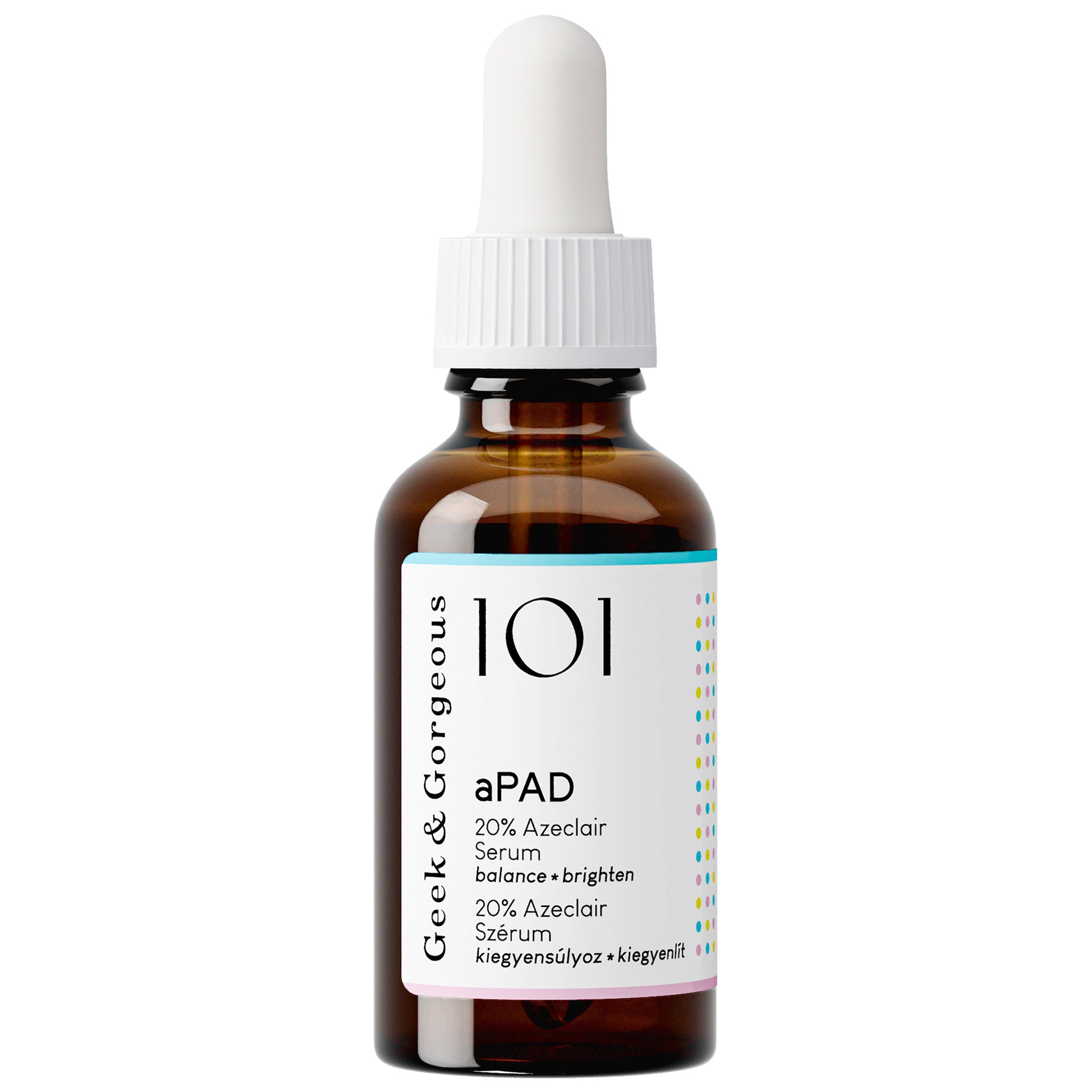

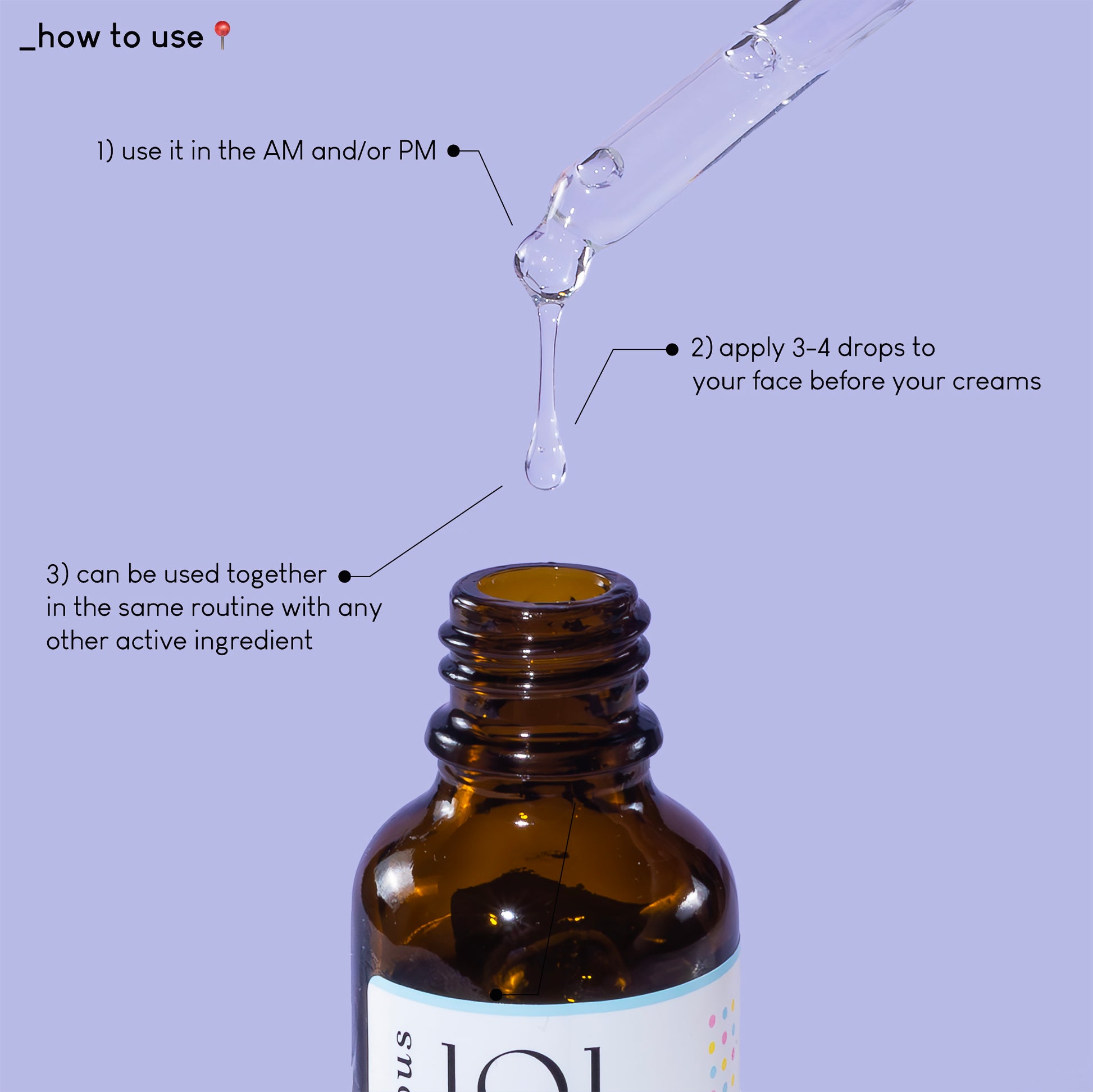
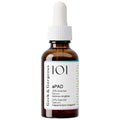
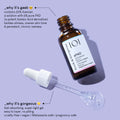
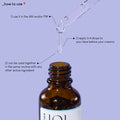



aPAD
A silky & light 20% Azeclair Serum with a potent Azelaic Acid derivative (Potassium Azeloyl Diglycinate or PAD) to normalize oil production, even the skin tone & calm the skin.
30 ml
Skin type: all skin types, including sensitive
Skin concern: oiliness, uneven skin, sensitivity, redness
Cruelty-free | Vegan | Fragrance & Essential oil free | Gluten-free | Malassezia-safe | Pregnancy-safe
Couldn't load pickup availability
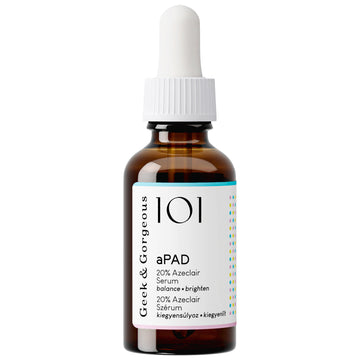
aPAD
description
Glycerin
In our formula we are using 20% Azeclair, a solution containing 6% pure Potassium Azeloyl Diglycinate (PAD). While 6% might not sound like a high number, when it comes to PAD, it is an outstanding amount. The molecule is effective already and typically used at 1-3%. Studies done by the ingredient’s manufacturer show that 3% PAD (or 10% Azeclair) is an effective amount in normalizing oil production and evening the skin tone, while a study published in the Journal of Dermatological Treatment used 5% PAD for the management of rosacea.
Geek tip: Based on our experience, those who are sensitive to niacinamide tend to find aPAD an especially helpful addition to their skincare routine.
who is it for?
how to use
Apply a few drops to the face after cleansing, before using emulsions and/or creams. Can be used either in the AM and/or PM.
Shelf life: 2 years from production (unopened), 6 months PAO (period after opening)
ingredients & research
key ingredients:
Potassium Azeloyl Diglycinate - A new generation Azelaic Acid derivative designed to be water-soluble and thus enable light formulas. It has a similar effect to the 3-in-1 clinical active Azelaic Acid that helps to normalize oil production, evening the skin tone, reducing blemishes, pigmentation and redness. There are a few studies using PAD already: two used it for the management of rosacea here and here, and another one used it for the management of melasma.
Allantoin - A classic skincare ingredient known for its skin soothing & skin protecting abilities.
Glycerin & Methyl-Gluceth 20 - A gentle humectant combination to help the skin to hold onto water.
full inci list:
Aqua (Water), Potassium Azeloyl Diglycinate, Propanediol, Glycerin, Methyl Gluceth-20, Allantoin, Hydroxyethylcellulose, Xanthan Gum, Citric Acid, Ethylhexylglycerin, Phenoxyethanol
research:
Berardesca, Enzo, et al. "Clinical and instrumental assessment of the effects of a new product based on hydroxypropyl chitosan and potassium azeloyl diglycinate in the management of rosacea." Journal of cosmetic dermatology 11.1 (2012): 37-41.
Viyoch, Jarupa, et al. "Effects of trans-4-(aminomethyl) cyclohexanecarboxylic acid/potassium azeloyl diglycinate/niacinamide topical emulsion in Thai adults with melasma: a single-center, randomized, double-blind, controlled study." Current Therapeutic Research 71.6 (2010): 345-359.
Veraldi, Stefano, et al. "Treatment of symptoms of erythemato-telangiectatic rosacea with topical potassium azeloyl diglycinate and hydroxypropyl chitosan: Results of a sponsor-free, multicenter, open study." Journal of Dermatological Treatment 26.2 (2015): 191-192.
I have jawline acne and overall redness/discoloration on my face so was exicted to try this variation of Azaleiac acid. Two days ago I felt a new huge pimple coming up on my jawline. I used aPad normally (every night) and no joke, last night prior to skincare I couldn't even find the pimple! I have never had a zit go from starting to form to disappear so quickly.
This is one of my favourite azelaic acid serums. It helps clear my skin when I’m breaking out and helps keep my acne at bay. It has ana azelaic acid derivative so it’s gentler than pure azelaic acid. So if you have sensitive skn and want to try azelaic acid, start with this!
This was my first time using an azelaic acid derivative. I actually wanted to start using azelaic acid, but I could not find one without an ingredient that I would have a reaction too. That’s why I decided to go with this GG aPAD. The ingredients are very minimal and non acne causing. Big thanks to the company for not adding niacinamide to this, as that ingredient gives me bad acne. I’m really glad I gave this product a try. It’s very gentle on my sensitive skin and doesn’t cause any irritation or new breakouts. My skin finds it calming and healing. I’ve only been using it for a couple weeks, so it hasn’t helped a whole lot with my existing acne yet, but it hasn’t helped some, I’m noticing a tiny bit less blackheads. I’m hoping with continued use it will help more. This product isn’t sticky, goes on very light, doesn’t leave a film on my face, helps my skin to not look so irritated, wears well under my moisturizer, sunscreen, and makeup. If you have sensitive and acne prone skin, I recommend giving this product a try.
Mám už asi piate balenie. Jemne exfoliuje moju šupinatú drsnú pokožku a aj so suchosťou si poradí, tmavé škvrny vybehli.... Raz som ho na istý čas vysadila a bolo to vidieť na pleti, takže zostáva natrvalo v mojej rutine.
Ein tolles Produkt. Ich nutze es nach C-Glow und HA 5 Light. Meine Haut hat nicht mehr diesen Öl-Glanz und sieht wesentlich ebenmäßer aus.
